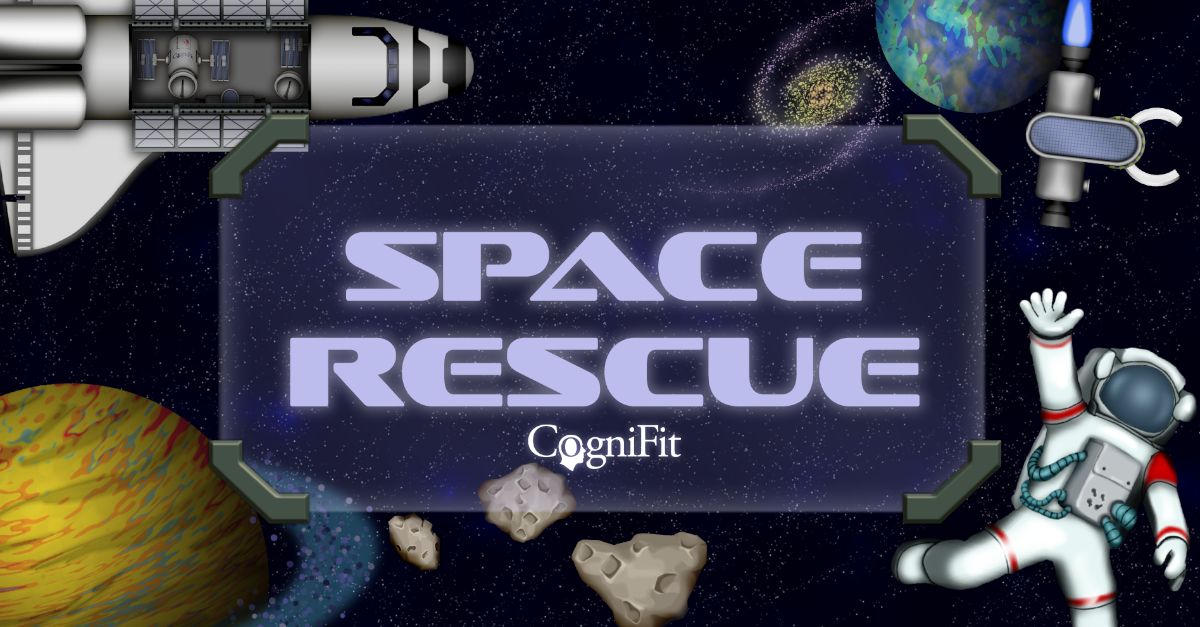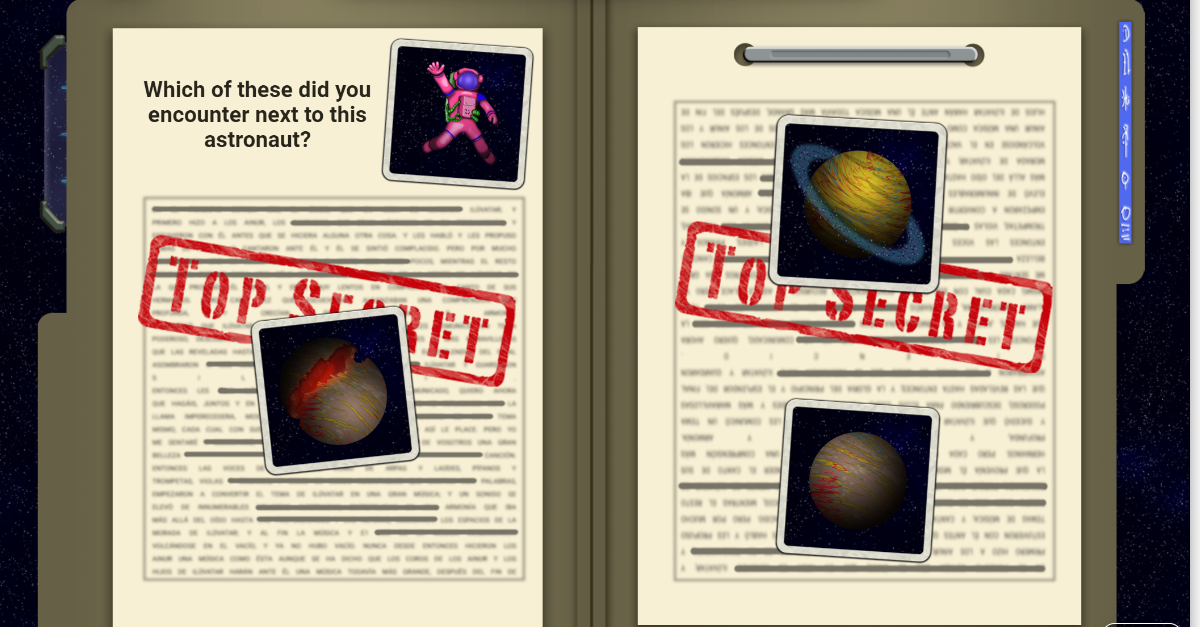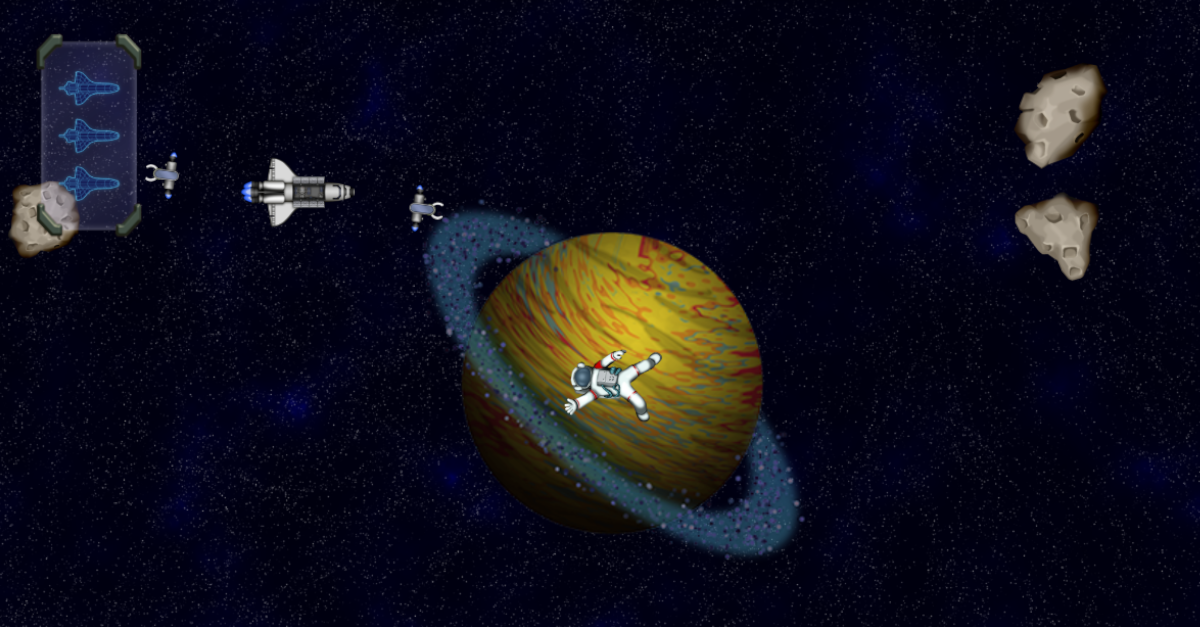
Space Rescue Game – Astronauts & Asteroids, Oh My!
Want to play something that has a nod to the retro but the modern foundation of a brain game? Look no further than Space Rescue!
In this game, you will pilot a spaceship equipped with two orbiting claws. Your main goal is to rescue the astronauts while you dodge asteroids, satellites, and other debris.
But There’s So Much More!
At lower levels, you’ll be able to control the spin of your grappling hooks. Because yes, if they get clipped, you’ll lose a life! Dodge the coming debris until you see a stranded rocketeer. Then, dive in and let your shuttle claws grab him!
And, in fine CogniFit fashion, we’ve tossed in another brain-building twist.
At the end of each level, you will have to remember what planets, stars, UFOs, or galaxies you saw when rescuing a particular astronaut.
As levels get harder the speed of your obstacles increases (to put it mildly). Also, there will be more to dodge. And, finally, you won’t have the luxury of controlling your claw arms. They will be in a constant spin – forcing you to be extra careful how you navigate the dark expanses of space.
So, let’s take a closer look at some of the brain functions you’ll be exercising while playing Space Rescue!

Contextual Memory
This kind of ability allows us to (for lack of a better term) locate the origin of a specific memory. It can be anything – a person, place, smell, emotion, etc. It’s also a part of what goes into our long-term memory. But it’s connected to so much more.
Maybe you catch a smell of pine, and it reminds you of Christmas. Then you get that warm-fuzzy feeling of past times when you watched your kids open presents. Suddenly your stomach turns with the thought of your in-laws visiting. This is what Contextual Memory does.
But have you ever heard, “you can’t always trust your memories?”
Well, it can sometimes be true. Stress, time restraints, distractions, or problems somewhere along our memory creation processes can create errors. Things like dementia or brain injury are just a couple of examples. But there are also ways to make this particular brain process strong or more efficient.
Estimation
Estimation lets us do so many things we do on a daily basis. Things like reaching to push an elevator button, or judging if there’s enough space to parallel park between two cars.
We also have subcategories:
Distance Estimation: Distance estimation is the ability to estimate the future location of an object based on its current distance, and is the ability that makes it possible for us to carry out everyday activities without bumping into people or things.
- Speed Estimation: Speed estimation is the ability to estimate the future location of an object based on its current speed. This is what makes it possible to move through life and avoid obstacles and accidents.
- Movement Estimation: The ability to anticipate an object’s movement.
- Time Estimation: The ability to calculate the amount of time there is between two events.
In space rescue, you’ll have to use your estimation skill to know if you have enough room to pass around obstacles without getting hit.
Response Time
Also called “reaction time”, it’s the time it takes from when we see/perceive something to when we react to it.
Reaction time depends on various factors:
- Perception: Seeing, hearing, or feeling a stimulus with certainty is essential to having a good reaction time.
- Processing: It’s necessary to be focused and understand the incoming information/stimulus well.
- Response: Motor agility is necessary in order to be able to act and complete the response time loop.

However, there can be several “obstacles” that can make reaction time harder.
- “State” of the person – sleepy, too much food, age, etc.
- The complexity of the Stimulus: The more complex the stimulus, the more information that has to be processed, and the longer this process will take.
- Familiarity, preparation, and expectations: If you have to respond to a known stimulus that you’ve responded to before, the reaction time will be lower. The less information that you have to process, the quicker the reaction time will be.
- Stimulated sensory modality: Reaction time is shorter when the stimulus that triggers the response is auditory than if it is visual because auditory stimuli require less processing. Each sensory modality has a different reaction time.
Spatial Perception
This is the ability to be aware of your relationships with the environment around you. However, it’s actually made up of two sub-processes.
- Exteroceptive processes: which create representations about our space through feelings.
- Interoceptive processes: which create representations about our body, like its position or orientation.
Space is what surrounds us: objects, elements, people, etc. Space also makes up part of our thinking, as it is where we join all of our experiences. In order to get proper information about the characteristics of our surroundings, we use two systems. It helps us think in two and three dimensions, which allows us to visualize objects from different angles and recognize them no matter the perspective that we see them from.
Fun Fact: The left hemisphere is in charge of developing this cognitive ability. This hemisphere is where math and spatial calculations are developed, which directly correlate to good spatial perception, spatial comprehension, and with ourselves in our environment.
Space Rescue Conclusion
So, does Space Rescue sound like something for you? Get out of this world with planet fitness and see how exercise may be the best thing for you right now! When it comes to a healthy brain fitness regime, all you need is 3 times a week and 20 minutes per session. Why not give it a try?












